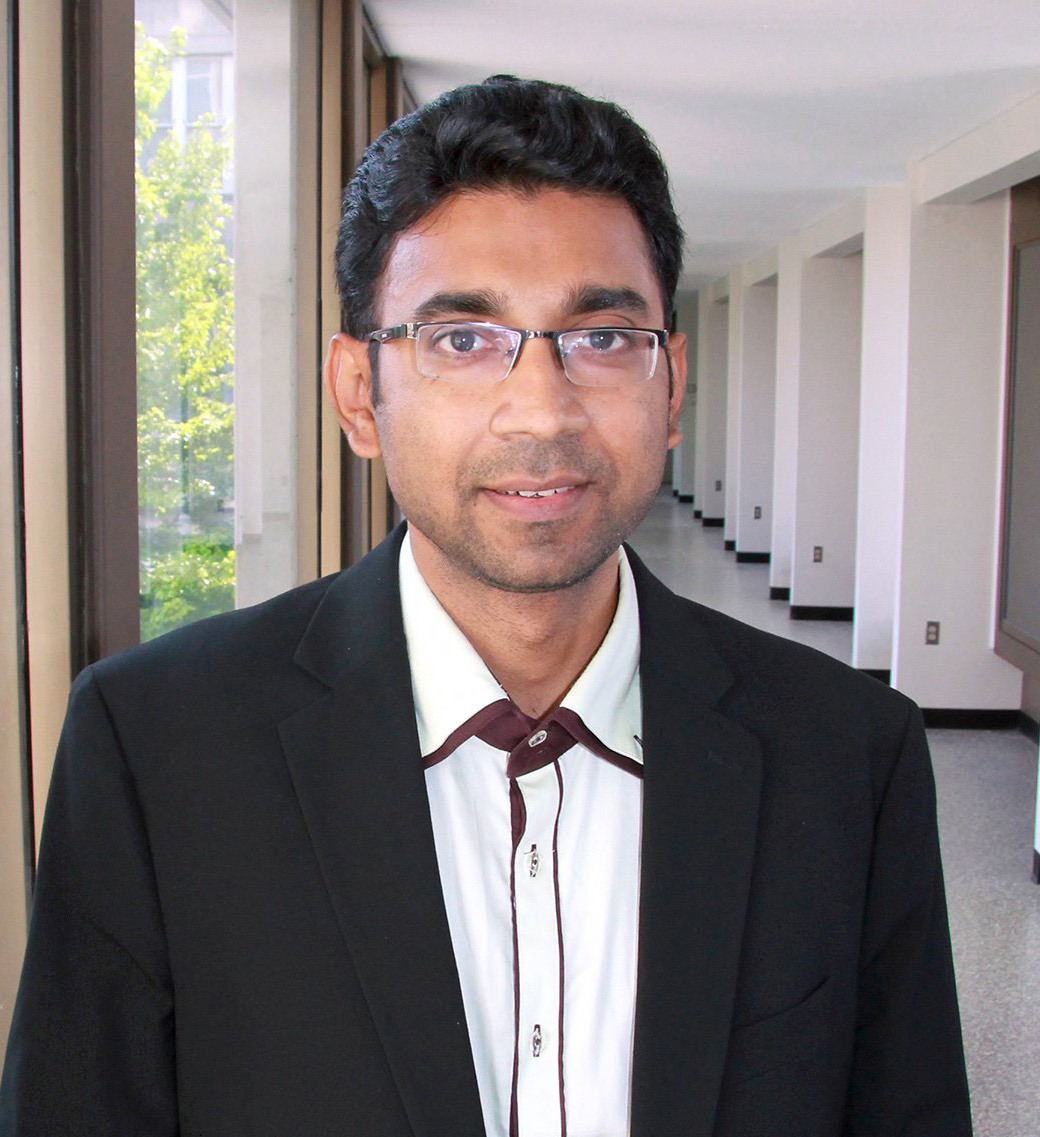
Shamsul Arafin, an assistant professor in Electrical and Computer Engineering (ECE), was awarded a one-year, $165,999 grant from the National Science Foundation (NSF) to fund exploratory research that could advance future quantum technologies.
Arafin joined ECE in 2018, hired through The Ohio State University’s Materials and Manufacturing for Sustainability Discovery Theme, operated by the Institute for Materials Research (IMR). His research areas include semiconductor lasers, molecular beam epitaxy, and nano-, graphene and silicon photonics.
Arafin serves as principal investigator on the project, titled “EAGER: Toward Monolithic Optically-Pumped Single-Photon Sources Based on Deterministic InGaN Quantum Dots in GaN Nanowires.”
Funding through NSF’s EAGER, or Early-concept Grants for Exploratory Research, supports early-stage but likely transformative work. NSF deems these projects potentially “high risk-high payoff,” meaning investigators are expected to take radical approaches and novel perspectives in their research approach.
Arafin’s project fit the bill.
“The long-term objective of the proposed research is to achieve bright and ultra-spectrally pure single-photon sources that meet aggressive performance specifications,” Arafin explains in his abstract.
Single-photon sources are one of most useful basic building blocks for many future quantum technologies. In particular, leading to revolutionary new communications, computing and sensing possibilities, if successfully developed.
Rather than powering computers through strict on/off functions, or the traditional 0/1 method, quantum technology allows for a steady and uncertain flow either way at all times. It could be the answer to efficiently processing big data, and exploring countless options for scientific discovery.
“If you ask a normal computer to figure its way out of a maze, it will try every single branch in turn, ruling them all out individually until it finds the right one,” Wired reports. “A quantum computer can go down every path of the maze at once. It can hold uncertainty in its head.”
This is important because quantum computers could easily outperform the most powerful modern supercomputers. Such technology would rapidly accelerate the development of artificial intelligence, batteries for electric vehicles, solar lighting, cheaper medication and even help find a cure for Alzheimer’s – or, in the current situation, allow for the faster development of vaccines.
The problem is current quantum computers remain unreliable. To date, science has yet to reveal a quantum light source that simultaneously combines robust design, coherent, tunable, bright, focused and efficient power.
Success in this realm could remove constraints leading toward next-generation quantum photonic technologies to advance different disciplines of science and engineering, such as optics, materials science, electrical engineering, physics, and chemistry.
“In this EAGER proposal, we explore a new and unique technique for the growth of nitrogen (N)-polar GaN NWs with InGaN quantum dots deterministically placed inside using a bottom-up approach via plasma-assisted molecular beam epitaxy,” Arafin explains. “The proposed research will lead to deeper fundamental insights into mechanisms and processes involved in scalable quantum photonic devices and integrated circuits. This inherently interdisciplinary research combines material science, quantum physics, chemical engineering and electrical engineering to generate new fundamental knowledge in several scientific fields.”
To learn more about related opportunities in this realm of science, explore the Institute for Materials Research and Solid State Electronics and Photonics program.
Some information contained in this article originally appeared on the ECE website. Story by Ryan Horns, ECE/IMR Communications Specialist
